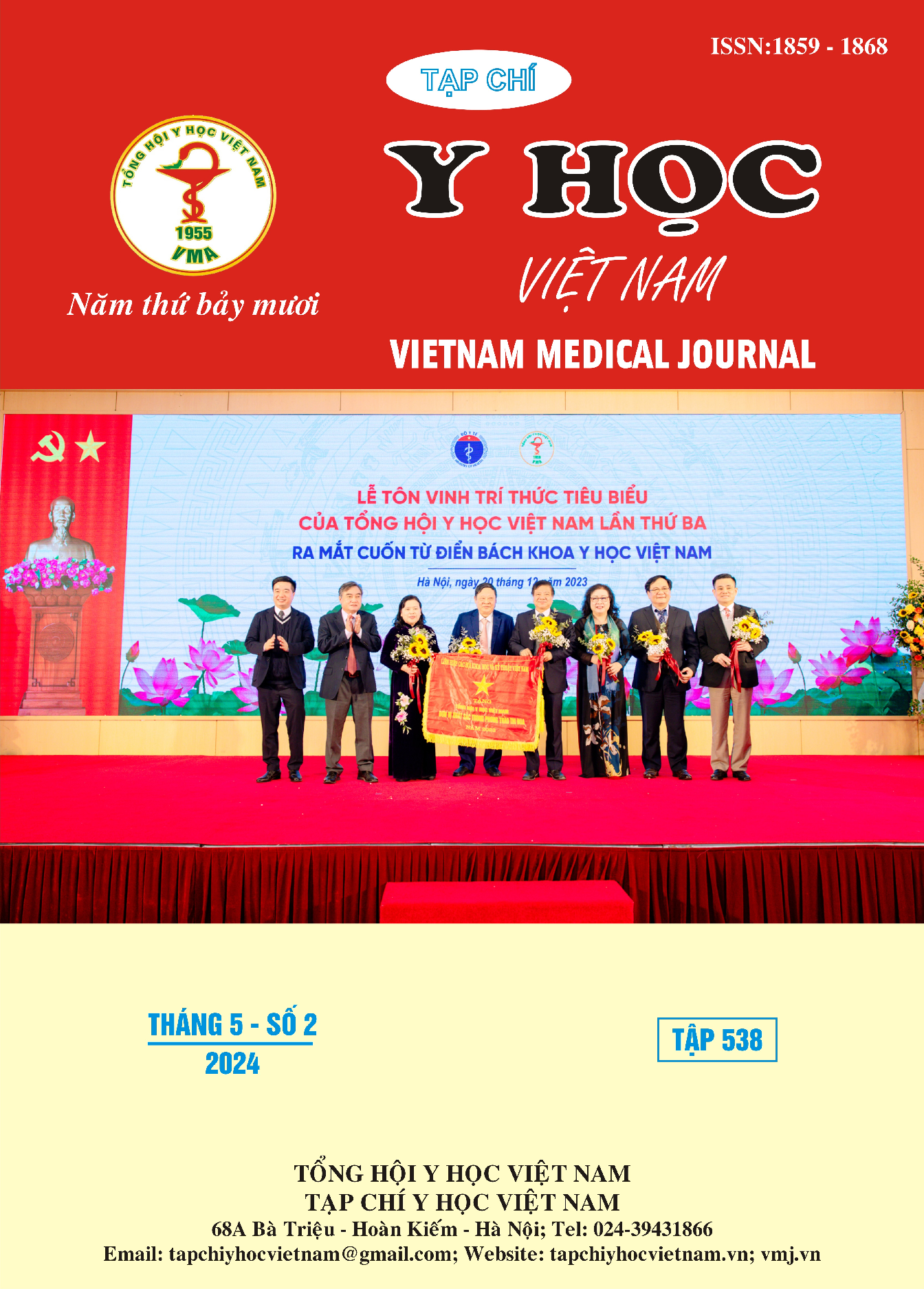THE ROLE OF 18FDG- PET/CT IN DIAGNOSING STAGES OF NON-SMALL CELL LUNG CANCER AT THE HOSPITAL 19-8
Main Article Content
Abstract
Objective: To evaluate the value of 18FDG - PET/CT in diagnosing the stage of NSCLC. Research subjects and methods: prospective study on 60 newly diagnosed non-small cell lung cancer patients, who were scanned with 18FDG PET/CT at the imaging department, Hospital 18-9 from April 4 /2021 - August 2023. Results: Diagnosis of the T stage between CT and PET/CT has very high similarity with kappa coefficient = 0.78. Diagnosis of the N and M stages between CT and PET/CT were weakly similar with kappa coefficients of 0.38 and 0.26, respectively. There were 24 patients (40%) with increased stage after PET/CT scan. Conclusion: Diagnosis of the T stage between CT and PET/CT has very high similarity, however diagnosis of the N and M stages between CT and PET/CT has weak similarity. 40% of patients have increased stage after PET/CT scan.
Article Details
Keywords
Stage of non-small cell lung cancer, PET/CT.
References
2. Sung Shine Shim. et al. (2015) Non–Small Cell Lung Cancer: Prospective Comparison of Integrated FDG PET/CT and CT Alone for Preoperative Staging . Radiology.;236(3):1011-9.
3. W. De Wever, S. Stroobants, J. Coolen and J.A. Verschakelen (2009) Integrated PET/CT in the staging of nonsmall cell lung cancer: technical aspects and clinical integration. European Respiratory Journal.;33(1):201-12.
4. Dwamena BA, Sonnad SS, Angobaldo JO, Wahl RL. (1999) Metastases from non-small cell lung cancer: mediastinal staging in the 1990s--meta-analytic comparison of PET and CT.Radiology. 1999 Nov;213(2):530-6.
5. Daniel Morgensztern. et al. (2010) Trends in Stage Distribution for Patients with Non-small Cell Lung Cancer A National Cancer Database Survey. Journal of Thoracic Oncology.5(1):29-33.
6. Daniel Morgensztern. et al. (2010) Trends in Stage Distribution for Patients with Non-small Cell Lung Cancer A National Cancer Database Survey. Journal of Thoracic Oncology.5(1):29-33.


